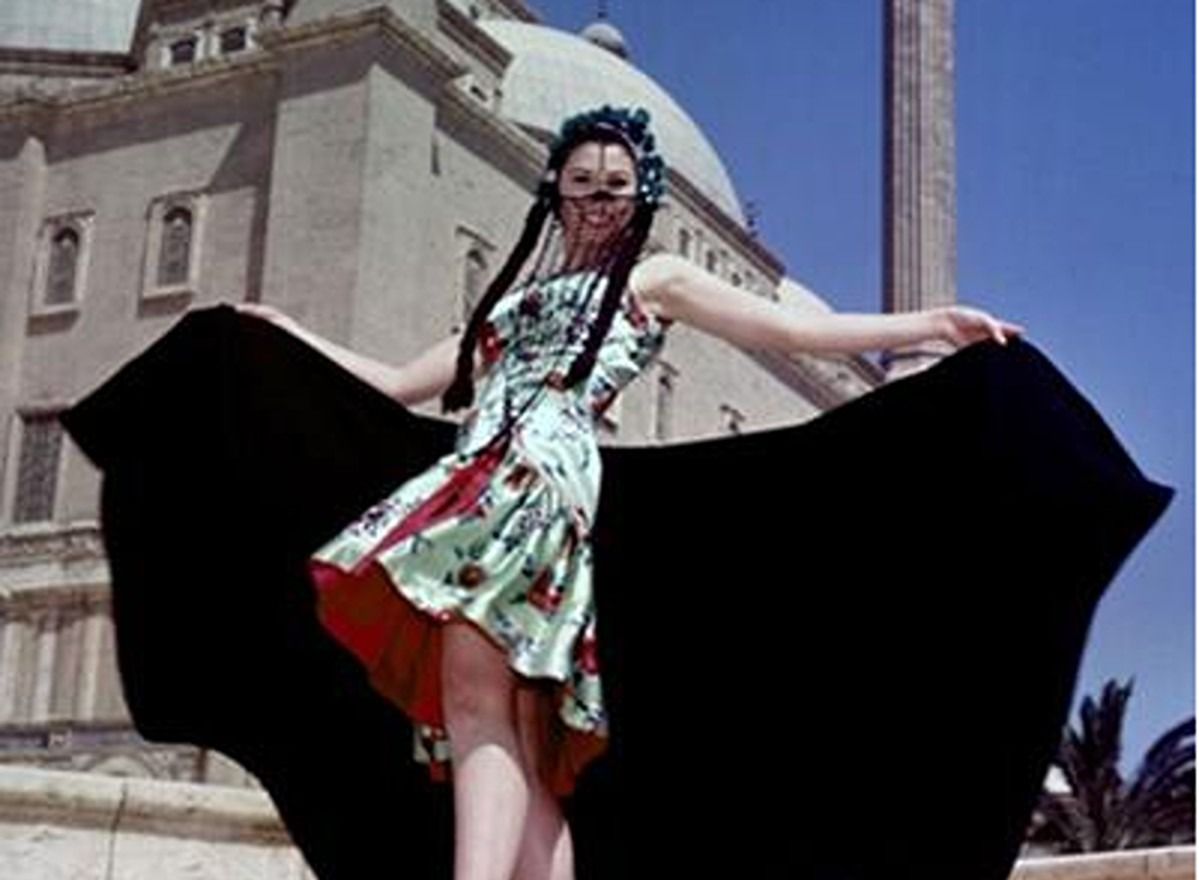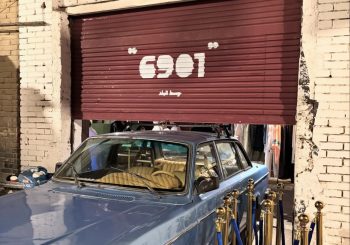Posing elegantly before the historic Muhammad Ali Mosque, Farida Fahmy, renowned Egyptian dancer and co-founder of the iconic Reda Troupe, is dressed in a traditional jellabiya, wrapped gracefully in a black melaya leff (wrapping sheet), a symbolic wrapping garment popularly worn by rural Egyptian women.
This iconic photo endures as a cornerstone of Egypt’s cultural memory and heritage, capturing the essence of the ‘bint al balad‘ (daughter of the country), a popular term used by Egyptians to describe a woman deeply connected to her heritage. She is a woman who not only remains connected to her culture but also personifies intelligence, charm, and a sharp-witted nature that encapsulates the true spirit of Egyptian womanhood.
While the West has ‘the girl next door’—a natural, wholesome, down-to-earth archetype—bint al balad has a distinctly Egyptian twist. For Egyptians, wholesomeness includes dependability and loyalty, and a true bint al balad also confronts challenges with courage, strength, and sharp intelligence.
Throughout history, women have been depicted through archetypes like the mother, maiden, lover, and seducer, each shaping or limiting her character and often tied to specific styles of dress. The mother wears modest attire, while the lover or seducer dons more revealing clothing.
Yet the bint al balad archetype gives Egyptian women the freedom to blend provocateur and reserved traits, innocence and flirtation, youthfulness and maturity. Tied to the black melaya leff, this style lets her conceal or show herself as she pleases, quietly challenging strict gender rules and embracing different sides of her identity. As social anthropologist Sawsan Messiri once pointed out, ‘the overwrap allows part of the body to show, like a bare arm, while the other is covered…all of which allows her to perform a series of alluring gestures by which to attract the attention of passers by.’
With a single garment—the melaya leff—an Egyptian woman could hide or unveil herself as she desired. It influenced not only a woman’s appearance but also the way she moved, creating a new form of nonverbal communication. A woman’s movements with the melaya leff became an extension of her identity, allowing her to express herself and interact with others in her own way.
The exact origins of the black melaya leff are unclear, with some dark shawls or wraps existing since the Ptolemaic era and the Ottoman Empire. However, the melaya leff we recognize today only gained widespread fame by the 20th century, appearing in films, literature, and dance, notably through the Reda Troupe, a musical group started in 1959. Farida Fahmy and the troupe are often recognized for creating a dance featuring the melaya leff as a prop, with Fahmy herself noting in an article that the Reda Troupe pioneered this theatrical portrayal of the bint al balad’s melayah dance.
This dance stood out not just for its choreography but for weaving the bint al balad ’s story and personality into a theatrical performance, distinct from traditional styles. Fahmy noted that the Reda Troupe’s theatrical dances strengthened the bint al balad character, blending unique moves and expressions with fresh dance steps rooted in the character’s natural gestures. This way, dance emerged from everyday movements, as Fahmy explained.
In essence, the dance created a new vocabulary for the bint al balad archetype—a new language of body movements and expressions that shaped Egyptian women’s identity and culture.

The melaya leff officially debuted in the Reda Troupe’s choreography in 1959, featured in a lighthearted skit mixing Egyptian humor with everyday life. In the scene, a syrup vendor serves children but gets distracted when a woman in a melaya leff, one arm bare, appears. As he pours her syrup, he spills it on her, sparking her fury. She flings off her melaya—an act tied to the Egyptian phrase ‘tefreshlo el melaya,’ signaling her rage through this dramatic gesture.
In this skit, the identity of the bint al balad Egyptian woman is captured through her movements: the sway of her hips and waist, the clicking of her heels, and the playful gestures that reveal part of her body. At the same time, her strength is expressed in the forceful way she pulls her melaya leff when angry.
Like a single lipstick that can dramatically transform a woman’s appearance, the melaya leff became the Egyptian woman’s unique tool for self-expression, revealing her identity in deeply personal ways. This garment proves that a woman’s essence is far more fascinating and multifaceted than any single archetype, remaining as fluid and free-spirited as the melaya leff itself.







Comments (0)